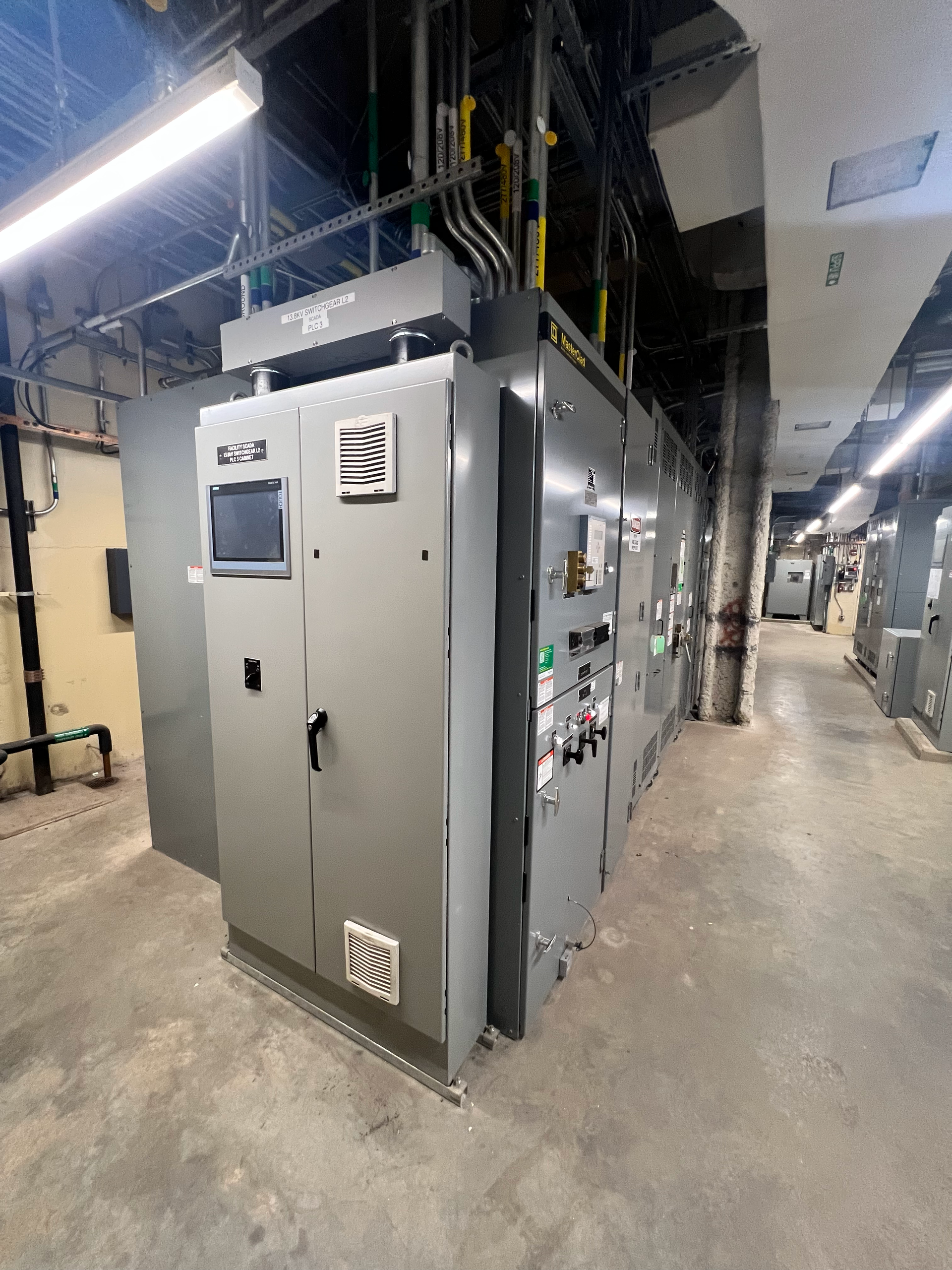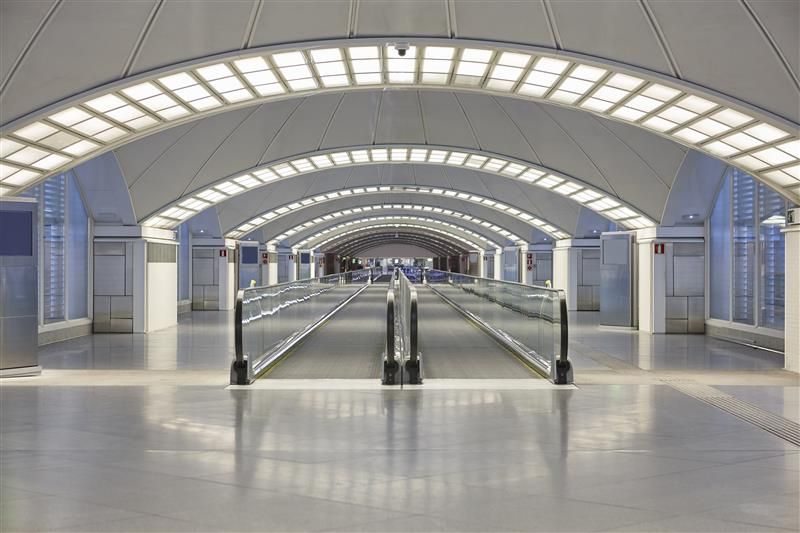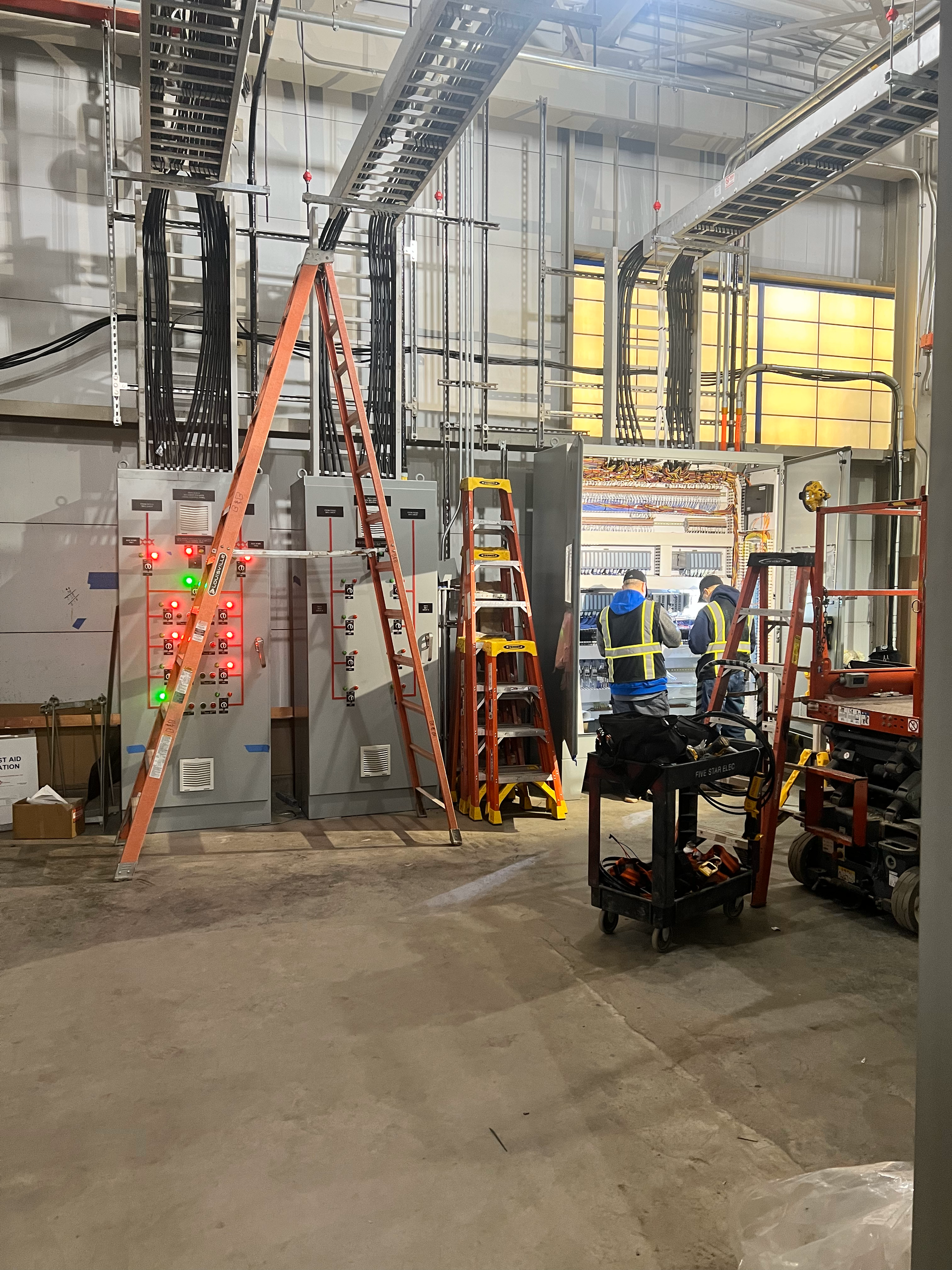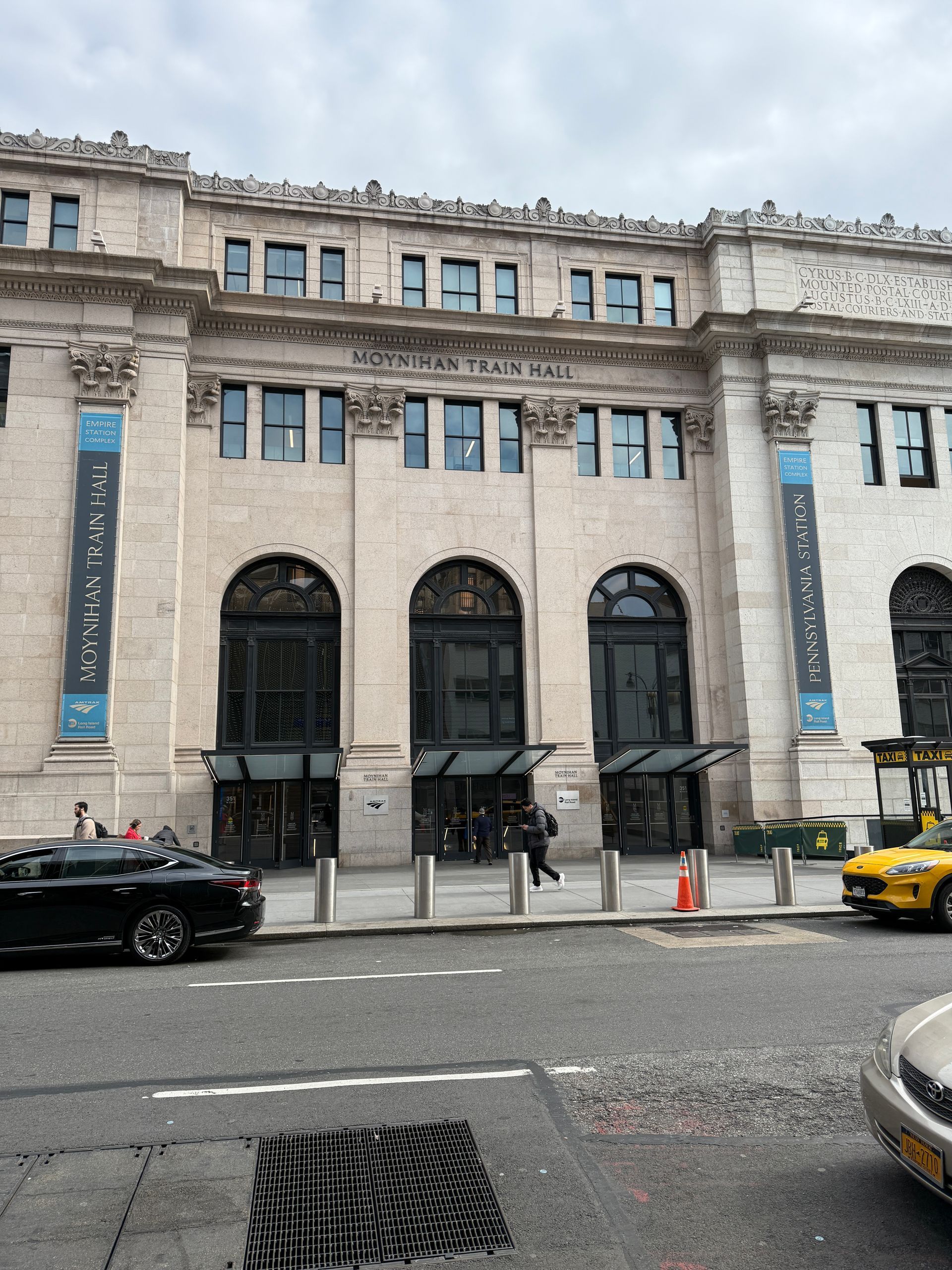NYC SCADA & Automation Experts for Transit and Infrastructure Projects
Trusted Engineering Partner for SCADA Systems, Automation, and Electrical Solutions Across New York’s Rail, Tunnel, and Airport Networks
Click the drop-down to read more about each of our NYC projects.
Moynihan Train Hall
The Moynihan Train Hall Project transformed the historic James A. Farley Post Office Building into a state-of-the-art transportation hub, enhancing New York City’s transit infrastructure. This modernization effort preserves the building’s architectural heritage while integrating cutting edge technology and improved passenger amenities. The train hall provides expanded concourse space, enhanced accessibility, and a more seamless travel experience for commuters. By alleviating congestion at Penn Station, currently the busiest passenger transportation facility in the United States handling over 650,000 passengers per weekday, the project significantly improves operational efficiency and passenger flow for Amtrak and other transit services.
AETA designed, assembled, programmed, and commissioned a SCADA system to integrate seamlessly into the existing Amtrak FLSS system.
PATH Christopher Street Substation Renovation

The Christopher Street (SUB01) Traction Power Substation (TPSS) is a critical component of the PATH commuter rail system, supplying power to the uptown line connecting New Jersey to New York City. Originally built in the early 1970s, the substation underwent a major upgrade to replace its aging 6-megawatt equipment with a modern 12-megawatt system. The project also integrated a redundant Siemens S7-400 PLC/HMI system to enhance SCADA functionality and ensure seamless communication with the New Jersey control center, all while maintaining uninterrupted train service to the 33rd Street station.
AETA designed, assembled, programmed, and commissioned a fully redundant SCADA system, including multiple remote I/O enclosures, a local HMI, and backup hardwired control panels. The system enhances operational efficiency with improved breaker control, expanded monitoring capabilities, and intuitive operator interfaces. AETA also worked closely with Siemens to integrate Sitras Pro Relays for advanced DC protection and power management, ensuring reliability and safety in the upgraded substation.
World Trade Center SCADA System

After the tragic events of September 11, 2001, the World Trade Center PATH station required a complete rebuild, including a new traction power substation to supply 650VDC to the rail system. Instead of integrating into the existing network, a new SCADA system was developed to monitor and control the substation from the Hoban Control Center in New Jersey.
AETA designed, assembled, programmed, and commissioned a highly reliable SCADA system using a triple modular redundant (TMR) architecture to ensure 99.999% uptime. The system includes triplicated PLCs, redundant operator interfaces at both the station and control center, and real-time power quality monitoring with automated data logging. AETA also developed over 200 engineering drawings and conducted exhaustive system testing to ensure seamless operation when the new station opened in November 2003.
Randall’s Island Triborough Bridge Power Monitoring System

The power monitoring system for Randall’s Island, supporting the Robert F. Kennedy Bridge, required a complete retrofit after becoming nonfunctional. The upgrade involved replacing power quality meters for three 13.8KV feeders and three associated 480VAC feeders, along with integrating digital inputs for breaker status monitoring. A new PC-based HMI was also needed to provide real-time system oversight.
AETA designed, assembled, programmed, and commissioned the upgraded monitoring system, utilizing Schweitzer SEL-734 revenue-grade power meters and a GE Cimplicity-based HMI with advanced monitoring, trending, alarming, and historical data capabilities. AETA also developed a new Ethernet network for seamless communication between components and provided detailed engineering documentation, installation supervision, and training to ensure the facility’s electrical maintenance team could operate and maintain the system effectively.
Amtrak East River Tunnel Rehabilitation

The Amtrak East River Tunnel (ERT) Rehabilitation project focused on upgrading key control and monitoring systems to enhance safety, efficiency, and reliability. The project includes new Programmable Logic Controllers (PLCs) for tunnel ventilation, fire alarm interfaces, mode selection, along with upgrades to the pressurization fan control and emergency door switch enclosures.
PATH Train Control and Communications Systems SCADA
The PATH Power SCADA System is designed to provide real-time monitoring, control, and diagnostics for the traction power network, ensuring safe and efficient operations. The system enables Power Directors to respond quickly to alarms, remotely operate breakers, and maintain system reliability through extensive redundancy measures.
AETA designed, assembled, programmed, and commissioned a fully redundant SCADA system that includes high-availability hardware, redundant power and communication infrastructure, and automated failover capabilities. With integrated diagnostics and real-time monitoring, the system minimizes downtime and enhances operational efficiency, ensuring seamless functionality across all PATH traction power facilities.
PATH Caisson 1 Substation PLC SCADA Replacement
AETA is upgrading the PLC and SCADA system for the Caisson 1 Traction Power Substation (SUB15) to enhance reliability and maintain existing functionality. The new system replaced the legacy TI565 PLC with a Siemens S7-1500H redundant PLC and Simatic ET200MP remote I/O, ensuring compliance with updated specifications while preserving established operations.
AETA designed, assembled, programmed, and commissioned the upgraded system, converting redundant output relay functions to 24VDC while maintaining existing relay bases and wiring. The upgrade ensured seamless integration with local and remote SCADA, retaining mimic panel functions and updating the OPC server for compatibility. The cutover process minimized downtime by implementing a modular terminal block approach for field wiring transitions, preserving proven wiring schemes and redundant input configurations to maintain operational continuity.
East Side Access Project

The East Side Access (ESA) project is a significant public works initiative in New York City that extended the Long Island Rail Road (LIRR) by two miles from its Main Line in Queens to the newly constructed Grand Central Madison station beneath Grand Central Terminal on Manhattan's East Side.
AETA played a vital role in multiple aspects of the project, including:
1. Facility Power Substations
- Designed, assembled, programmed, and commissioned SCADA panels to interface with switchgear in twelve Facility Power Substations.
- Collaborated with Siemens to extract data from their protection relays for display on local HMIs throughout the substations.
- Worked closely with LIRR to implement DNP3 communication protocol, ensuring seamless status and control data transmission from the substations to the LIRR SCADA system.
2. Traction Power Substations
- Programmed, and commissioned SCADA panels to interface with switchgear in Traction Power Substations.
- Integrated the substations with the LIRR SCADA system using the DNP3 communication protocol to facilitate status monitoring and control functionality.
3. Tunnel Ventilation Sites
- Designed, programmed, and commissioned redundant SCADA panels at twenty-two Tunnel Ventilation sites spanning from Queens to Grand Central Station.
- Ensured each site was capable of operating independently in the event of communication loss with the central SCADA system.
- Developed the SCADA system with redundant communication loops to maximize availability and operational reliability.
AETA's contributions to the ESA project enhanced system reliability, improved data communication, and ensured the successful integration of vital infrastructure supporting this major transportation initiative.
Newark Airport Terminal One Project

Terminal One is a one-million-square-foot Design-Build Project at Newark Liberty International Airport. As part of a major redevelopment and modernization initiative, this project aims to position Newark Airport to meet 21st-century transportation demands. It stands as the largest transportation infrastructure design-build contract in New Jersey state history.
The Supervisory Control and Data Acquisition (SCADA) system for Terminal One is based on GE Cimplicity SCADA software. This system will aggregate status and alarm data from various systems installed throughout the new Terminal One facility. The data will be displayed on intuitive terminal and system overview screens, along with detailed alarm logs and historical data records for enhanced monitoring and control capabilities.
JFK Airport Central Substation #2 Project

The JFK Airport Central Substation #2 project is a design-build initiative involving the construction of a new two-story substation building at JFK Airport. This facility will provide power to the new Terminal 1.
AETA was responsible for designing, building, and commissioning the SCADA system to interface with 15kV and 27kV switchgear. The system was configured to display this information on local HMIs and relay the data to the PA SCADA system for centralized monitoring and control.
PATH Substation Replacements

1. Substation #2
- PATH is constructing a new, modern substation in Jersey City to replace the existing critical asset that supports the entire PATH system. The new substation will feature updated electrical and mechanical equipment with improved flood and storm surge resilience, aligning with climate change and resiliency requirements.
2. Substations #7 and #9
- Both substations sustained extensive damage during Superstorm Sandy in 2012 and are nearing 50 years of service. The new Substation 7 is being constructed on property acquired from Conrail in 2014, while Substation 9 will be built on property acquired from PSE&G in 2016. Both substations will be elevated above FEMA flood elevation maps in accordance with PANYNJ’s climate resilience design guidelines.
3. Substations #8 and #14
- Superstorm Sandy exposed significant vulnerabilities in the NY Metropolitan area’s infrastructure. The Port Authority of New York and New Jersey initiated proactive measures to enhance infrastructure resilience. Replacements of Substations 8 and 14 are being constructed with flood-resilient materials, new foundations built to 2015 FEMA flood guidelines, and sustainable construction practices.
For each of these substations, AETA designed, assembled, programmed, and commissioned a fully redundant SCADA system. This included multiple remote I/O enclosures, a local HMI, and backup hardwired control panels. The system enhances operational efficiency with improved breaker control, expanded monitoring capabilities, and intuitive operator interfaces.
Power Your Next NYC Transit Project with ARM EnerTech Associates.
Contact us today!
Tell us about your project goals or technical needs, and we’ll tailor a solution that fits. We’re here to support your success — from planning to execution.


